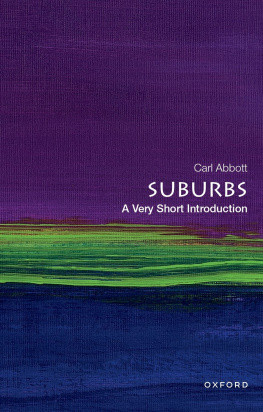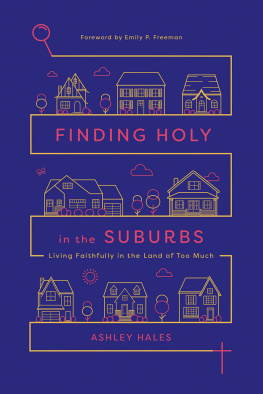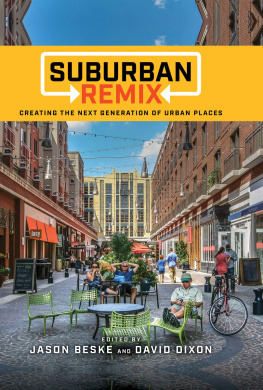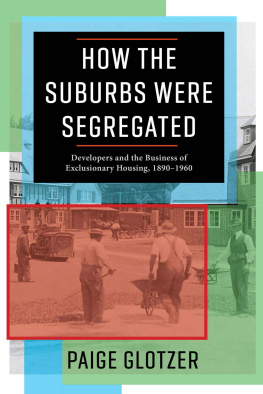Amanda Kolson Hurley - Radical Suburbs: Experimental Living on the Fringes of the American City
Here you can read online Amanda Kolson Hurley - Radical Suburbs: Experimental Living on the Fringes of the American City full text of the book (entire story) in english for free. Download pdf and epub, get meaning, cover and reviews about this ebook. year: 2019, publisher: Belt Publishing, genre: Politics. Description of the work, (preface) as well as reviews are available. Best literature library LitArk.com created for fans of good reading and offers a wide selection of genres:
Romance novel
Science fiction
Adventure
Detective
Science
History
Home and family
Prose
Art
Politics
Computer
Non-fiction
Religion
Business
Children
Humor
Choose a favorite category and find really read worthwhile books. Enjoy immersion in the world of imagination, feel the emotions of the characters or learn something new for yourself, make an fascinating discovery.

- Book:Radical Suburbs: Experimental Living on the Fringes of the American City
- Author:
- Publisher:Belt Publishing
- Genre:
- Year:2019
- Rating:3 / 5
- Favourites:Add to favourites
- Your mark:
Radical Suburbs: Experimental Living on the Fringes of the American City: summary, description and annotation
We offer to read an annotation, description, summary or preface (depends on what the author of the book "Radical Suburbs: Experimental Living on the Fringes of the American City" wrote himself). If you haven't found the necessary information about the book — write in the comments, we will try to find it.
Radical Suburbs is a revelation. Amanda Kolson Hurley will open your eyes to the wide diversity and rich history of our ongoing suburban experiment.--Richard Florida
Americas suburbs are not the homogenous places we sometimes take them for. Todays suburbs are racially, ethnically, and economically diverse, with as many Democratic as Republican voters, a growing population of renters, and rising poverty. The cliche of broad lawns and white picket fences is well past its expiration date.
The history of suburbia is equally surprising. Rather than bland, sprawling cookie-cutter developments, some American suburbs were once fertile ground for utopian planning, communal living, socially conscious design, and integrated housing. In Radical Suburbs, Amanda Kolson Hurley, an editor at Bloomberg Businessweek, takes us on a tour of some of these radical communities, including:
- the co-housing commune of Old Economy, Pennsylvania
- a tiny-house anarchist community in Piscataway, New Jersey
- a government-planned garden city in Greenbelt, Maryland
- a racially integrated subdivision (before the Fair Housing Act) in Trevose, Pennsylvania
- experimental Modernist enclaves in Lexington, Massachusetts
- and the mixed-use, architecturally daring Reston, Virginia.
Here you will find blueprints for affordable, walkable, and integrated communities, filled with a range of environmentally sound residential options. Its a timely reminder, as NPR put it, that any place, even a suburb, can be radical if you approach it the right way.
An insightful study that will make you rethink your assumptions about suburbia and possibly remake its future.
Amanda Kolson Hurley: author's other books
Who wrote Radical Suburbs: Experimental Living on the Fringes of the American City? Find out the surname, the name of the author of the book and a list of all author's works by series.











